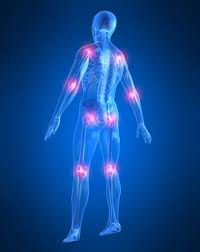Joint Pain

What causes joint pain?
There are a number of risk factors which are associated with joint pain. Unfortunately eliminating these factors won’t guarantee that you will never suffer joint pain, but it will lessen the chances considerably. These factors include old injuries (sporting injuries in one’s youth can often be a culprit), obesity, consistent repetitive activity (tennis elbow comes to mind as a good example), generally weak muscles and to a lesser extent heredity factors.
Other factors that can have an adverse effect on our joints include posture, footwear and lifestyle generally.


Why is it important to understand the causes?
To offer the most appropriate treatment we need first to understand the causes of your specific joint pain, e.g. sprains and strains, tendinitis, and secondly those factors that are placing the patient at risk e.g. posture, muscle imbalances and excessive use.
What is the difference between arthritis and osteoarthritis?
There are many different types of arthritis, all of which describe the inflammation of a joint and often subsequent pain.
Osteoarthritis is caused by wear and tear, mainly due to our natural aging process. The cartilage surrounding each joint degenerates and as a result tendons and ligaments become deformed. This can lead to stiffness in and around the joint. Typical symptoms are deep aching pain, morning stiffness and loss of movement in the joint.
Other forms of arthritis include rheumatoid arthritis, an inflammatory form of arthritis that occurs when the body’s own immune system does not work properly. Gout aggravated by higher than normal levels of uric acid in the body causes crystals to form in the joints. Other common types of arthritis include psoriatic arthritis, lupus and sceptic arthritis.

Can Chiropractic Reverse Osteoarthritis?
Chiropractic can slow down the spread of the condition and reduce its impact on other joints. It’s not, however, possible to reverse the condition, but, by adjusting the spine and peripheral joints, chiropractic can ease the pain, increase mobility and slow down joint degeneration. Also by addressing the other risk factors such as obesity and ergonomics, patients can help themselves.
At Cornwall Chiropractic Clinic, we ensure the best possible treatment for osteoarthritis by examining all the possible causes and risk factors and advising accordingly. As a result, no two patients’ treatment plans will be identical; everything is personalised and modified according to progress and outcomes.
